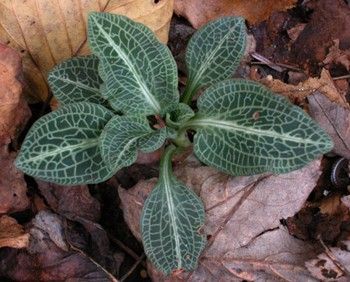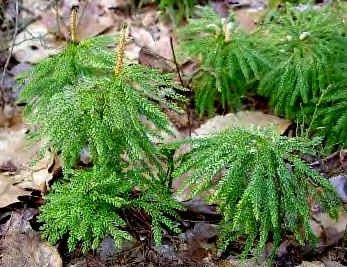Evergreen Plants in Winter Woods
To native plant enthusiasts, it seems a long time from autumn's last witch-hazel to the first skunk cabbage of early spring.
However, winter is the best time to look for several plants that are inconspicuous in the fullness of summer. For example, clubmosses and ferns provide green accents in the winter and also give clues to a woodland's history and diversity. These plants take a long time to establish, so a woodland with several fern and clubmoss species has probably not been disturbed for some time. Christmas fern, intermediate fern, marginal wood fern, tree clubmoss, and shining clubmoss are common species that remain green throughout the winter.
Some orchids are also evergreen. One of the most common is rattlesnake plantain with its attractive white-veined leaves. Two other orchids, cranefly and puttyroot, have reversed growing seasons. New leaves emerge in October, taking advantage of the weak winter sun, and then wither away as the canopy trees leaf out in the spring. Unless these plants blossom (and often they don't), they can only be seen in winter. Look for single leaves that are upright early in the season and which bend downward as winter progresses. Puttyroot leaves can reach six inches in height and are blue-green with a pleated look. Cranefly orchid leaves are smaller and dark, purple-red on the back. Both of these orchids are considered rare in Pennsylvania, but you may find them as you brave the cold to savor the beauty of the winter woods.

